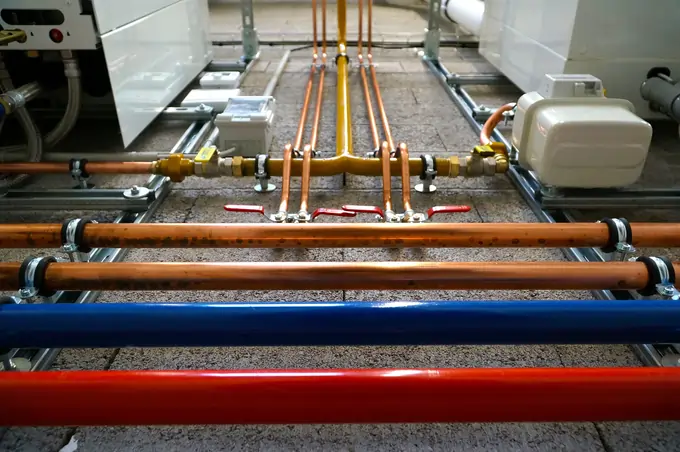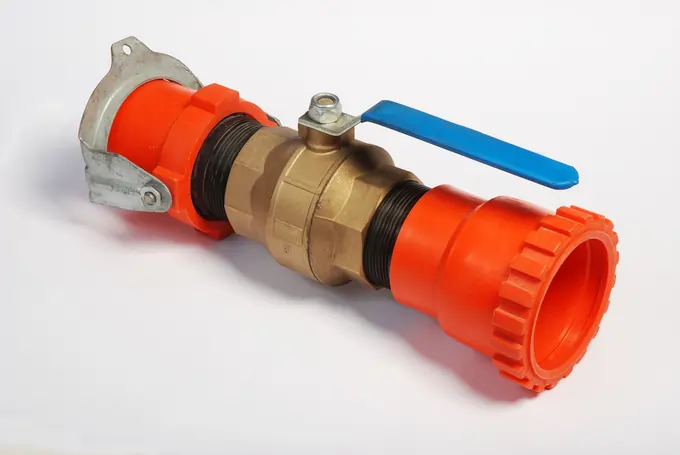Alright, let’s talk plumbing safety, specifically backflow preventer valves. These little gadgets are key in making sure dirty water doesn’t flow backward into your clean water supply. So, if you want your water to be clean and safe, installing a backflow preventer is a no-brainer.
Got it? Cool!
What Is a Backflow Preventer and How Does It Work?
A backflow preventer is a mechanical valve designed to prevent contaminated water from flowing back into the potable water system through cross-connections. It allows water to flow in only one direction to protect the public water supply.
Backflow preventers contain check valves, spring-loaded check valves, or a combination of check valves and other mechanisms to prevent backflow. The valves open to allow water to flow in the normal direction but close tightly to prevent reverse flow of water.
Types of Backflow Preventers
There are several types of approved backflow prevention assemblies:
- Double check valve assemblies – Contain two positive-seating check valves. No water can flow in reverse.
- Double check detector assemblies – Contains two positive-seating check valves with a bypass containing a water meter to detect leaks.
- Pressure vacuum breaker assemblies – Contain a check valve and a spring-loaded air inlet valve. Allows air to enter if the water pressure drops.
- Reduced pressure zone assemblies – Contain two check valves separated by a spring-loaded relief valve to maintain a zone of reduced pressure. Most reliable protection.
The Role of Check Valves in Backflow Prevention
Check valves are a crucial component of backflow preventers. They contain a movable disc or flap that opens to allow water to flow in one direction but closes tightly to prevent reverse flow.
Spring-loaded check valves are designed to close even faster when water tries to flow in the reverse direction. This rapid response helps prevent backflow incidents.
Why Is Backflow Prevention Important for Your Plumbing System?

Here’s everything you need to know about backflow: it’s when dirty water sneaks into your clean water supply—gross, right? So, you gotta know about backflow preventers, which stop that from happening. In short, understanding everything you need to know about backflow can save you from some nasty water issues. Simple as that!
Preventing Contamination in Drinking Water
Backflow prevention protects the safety of potable water supplies. It prevents harmful contaminants from being forced into the drinking water system through backflow.
Even small amounts of contaminated water can lead to health issues. Backflow prevention is critical to maintaining water quality and preventing illness.
The Impact of Backflow on Public Water Systems
Backflow can pollute water mains, storage tanks, and distribution systems that supply entire neighborhoods and cities. A single backflow event can rapidly spread contamination throughout a public water system.
Backflow prevention devices installed at cross-connections help safeguard municipal water supplies from large-scale contamination.
Backflow Prevention in Sprinkler and Irrigation Systems
Lawn sprinkler systems and irrigation piping are common sources of backflow. Fertilizers, pesticides, and other hazardous materials can be pulled into the potable water lines through back-siphonage.
Backflow preventers are required by most plumbing codes for sprinkler systems. They prevent the reversal of flow that could contaminate drinking water.
How to Choose the Right Backflow Preventer for Your Needs
Choosing the right backflow preventer doesn’t have to be a chore. First, figure out how your water is normally maintained in your system. Then, think about the potential backflow hazards. Once you’ve got that down, pick a model that fits your specific setup. Easy peasy!
Comparing Types of Backflow Preventers
Choosing the right type of backflow prevention assembly depends on the level of risk and type of cross-connection:
- Use vacuum breakers for connections to tanks and vats below water level.
- Use double check valves for low-hazard connections with non-toxic substances.
- Use reduced-pressure zone devices for high-hazard connections with toxic chemicals.
When to Use a Reduced Pressure Principle Backflow Preventer

Reduced-pressure principle assemblies provide maximum protection against backflow. Use them when connecting to boilers, fire sprinkler systems, medical equipment, and hazardous chemical tanks.
They contain relief valves that vent water to prevent back-siphonage and are designed for high-hazard situations.
Choosing Between Ball Valves and Check Valves
Ball valves are quick-opening but do not prevent backflow. Use dual check valves instead of fire lines, irrigation systems, boilers, or equipment connections.
Check valves provide reliable backflow prevention by blocking reverse flow. They are required by plumbing codes in cross-connection applications.
How to Install and Maintain a Backflow Preventer
Backflow prevention is a crucial aspect of keeping drinking water safe. First off, get a check backflow preventer from your local hardware store. This specialized backflow preventer is designed to ensure that backflow doesn’t contaminate your water system. It’s a must-have for systems where backflow risks exist, like in outdoor sprinkler heads or your indoor potable water tank.
To install, locate your main drinking water safe line and attach the backflow device. Make sure it’s installed correctly to deal with higher pressure and ensure water flows properly. The backflow preventer installed will use significant pressure to enable water to flow in one direction, protecting your potable water piping.
For a water delivery system like sprinklers, check the sprinkler pipe and connect the selection of backflow devices. Ensure it’s a popular backflow model suitable for your setup. Your potable water tank and sprinkler heads will thank you! Regularly inspect to keep everything in optimal condition and protect potable water from contamination being forced into a potable water line.
Step-by-Step Installation Guide
Proper installation is key to ensuring backflow preventers function correctly:
- Install on the main water line upstream of all connections.
- Position horizontally to prevent debris buildup.
- Allow adequate room for maintenance and testing.
- Connect the inlet and outlet shutoff valves to isolate the device for testing.
- Install a thermal expansion tank if needed to absorb pressure fluctuations.
Maintaining Your Backflow Preventer
Regular maintenance keeps backflow preventers working properly:
- Inspect for leaks annually. Check valve seals for wear.
- Clean strainers and filters to prevent debris from fouling the check valves.
- Replace worn or damaged internal components like seats, discs, and springs.
- Make sure air inlet valves open fully and relief valves function smoothly.
Troubleshooting Common Issues
Fixing common backflow preventer problems:
- Leaks – Tighten valve connections. Replace worn seals and O-rings.
- Frequent discharge from the relief valve – Debris is preventing the check valve from sealing. Clean and inspect internals.
- Reduced water pressure – Scale buildup is restricting flow. Descalve valve chambers and components.
How Often Should You Test and Inspect Your Backflow Preventer?
Ever wondered how often you should test your water backflow preventer? The quick answer is annually! Keeping your water distribution system safe means checking that reliable backflow preventers like Zurn Wilkins are functioning properly. Inspect those test cocks and test valves to make sure they are good to go.
If your system uses a reduced-pressure zone backflow or a double-check valve, it’s all about staying on top of it! Whether you’re dealing with non-potable water or the whole water distribution pipeline, these devices can save you big time in the event of a backflow.
And don’t forget about your inlet shutoff valve! Keeping an eye on any significant pressure changes or potential pollution due to backflow is key. Learn more about backflow and how a reduced-pressure assembly or other advanced backflow systems are designed to ensure backflow doesn’t mess with your water.
Understanding Testing Requirements
Most plumbing authorities require annual testing of backflow prevention assemblies. Testing verifies that the device works correctly to prevent backflow.
Devices must be tested by a licensed backflow assembly tester after first installation and repair. Testing ensures all check valves seal tightly.
Signs Your Backflow Preventer Needs Inspection
Inspect your backflow preventer if you notice:
- Reduced water flow from faucets
- Discolored water
- Relief valve discharging frequently
- Leaks around the device
- The backflow preventer is making rattling noises
These are signs the internal mechanisms may be fouled or failing. Annual inspections can catch issues before failures occur.


